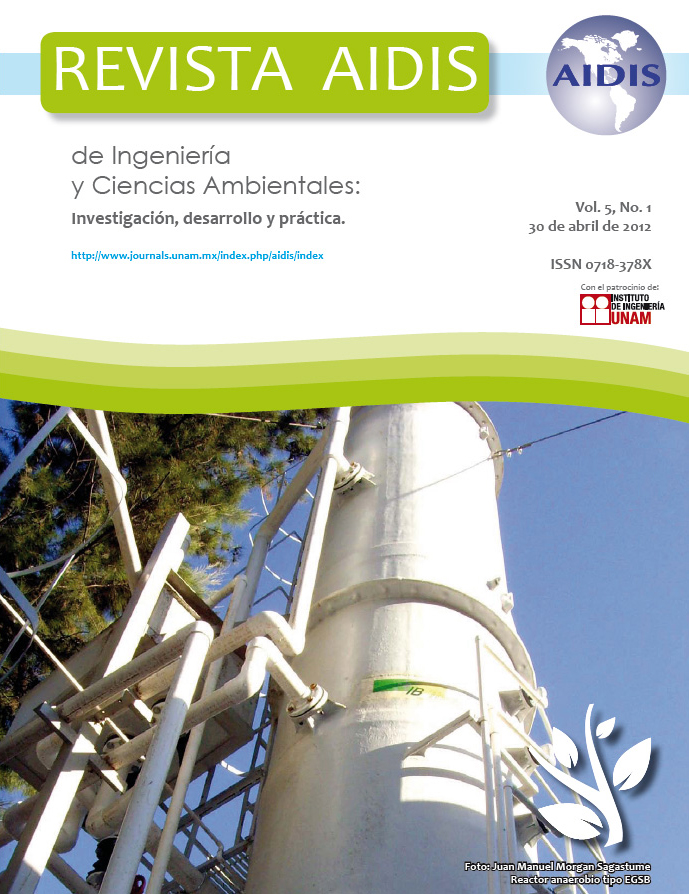REMOVAL OF REDUCED FORMS OF SULFUR, IRON AND MANGANESE FROM WATER BY NANOFILTRATION MEMBRANE SEPARATION
Main Article Content
Abstract
Many regions are affected by quality problems in their water sources’ supplies. Sometimes, the distributed drinking water may have problems associated with the presence of compounds that cause color, taste and odor leading to growing consumer’s complaints, mistrust, and increasing consumption of bottled water. It is well known that hydrogen sulfide (H2S), iron (Fe+2) and manganese (Mn+2) cause taste, odor and color in drinking water. This research used a pilot plant nanomembrane filtration system to investigate the removal of those compounds from water. The pilot plant was supplied with raw water taken from a reservoir used as water source for a treatment plant of the city of Porto Alegre, Brazil. The measurements demonstrated that nanomembrane filtration was effective in the removal of iron, manganese and hydrogen sulfide from water, for the operational conditions tested in the investigation.
Keywords: Drinking water quality, sulfur, iron, manganese, nanofiltration.
